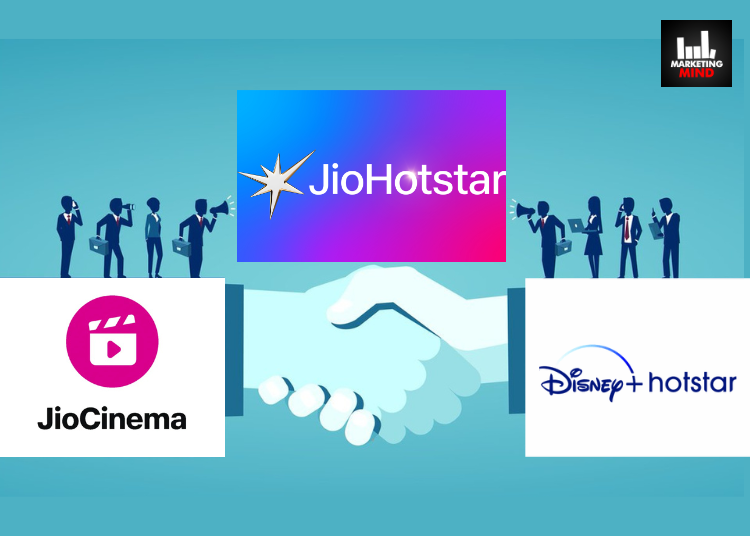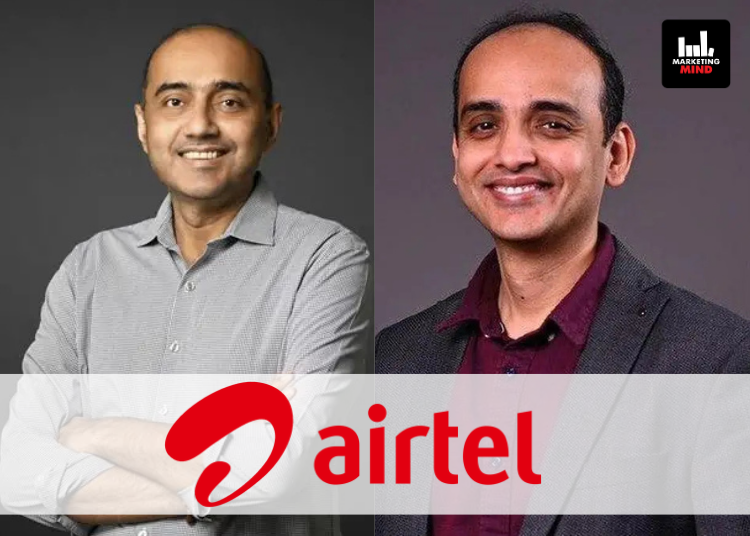Cricket in India isn’t just a sport- it’s an emotion, a spectacle that unites millions, and a goldmine for brands looking to tap into an unmatched level of engagement. And nothing proved this more than Sunday’s India-Pakistan match at the ICC Champions Trophy 2025, which shattered viewership records, drawing over 60 crore viewers on JioHotstar. The game wasn’t just a showdown between two cricketing giants, it was also the perfect stage for the streaming platform, born from the merger of JioCinema and Disney+ Hotstar, to showcase its dominance in the digital entertainment space.
As per industry leaders, with IPL 2025 on the horizon, this staggering viewership is more than just a number, it signals a seismic shift in India’s OTT landscape, offering brands and advertisers unprecedented opportunities to capitalise on this evolving ecosystem.
Apart from live sports, JioHotstar will also feature Hollywood content from Disney, NBCUniversal’s Peacock, Warner Bros. Discovery’s HBO, and Paramount- all available on a single platform. As per the streaming giant this is “something almost no other streaming service globally provides.”
The newly launched platform aims to transform how audiences engage with sports with immersive, interactive experiences for every fan, from passionate connoisseurs to big-event viewers. JioHotstar is the home of premier tournaments like ICC events, IPL, and WPL, while also spotlighting grassroots cricket with the Indian Street Premier League and pathway events from BCCI, ICC, and state associations. Beyond cricket, it brings global sporting excellence with the Premier League and Wimbledon while powering domestic leagues like Pro Kabaddi and ISL.
With the two streaming giants now merged, the focus shifts to its impact on the Indian streaming ecosystem, the opportunities it presents for advertisers, and what lies ahead.
According to Uday Sodhi, Senior Partner and Co-founder at Kurate Digital Consulting, the merger of two OTT platforms – JioCinema and Disney+ Hotstar, reduces the need for one additional app and this consolidation will help the industry grow and invest in content.
“JioCinema and Hotstar were anyways very successful platforms and with their merger they will become clear leaders in the Indian market,” Sodhi said.
“The advertisers are going to get more reach on one platform. Hopefully there will be an increase in advance rates as the ad rates in India are significantly lower than the rest of the world. The advertisers will have to get used to paying a higher rate for a larger audience and more impactful properties on the platform. Overall, I believe monetisation will improve for JioHotstar in the long run and that’s great for the industry,” he added.
A senior media planner believes this consolidation strengthens the platform’s ability to deliver targeted advertising, leveraging its extensive content library and vast user base. Its expansive reach enables advertisers to execute highly efficient campaigns.
Meanwhile, Ashish Bhasin, Founder The Bhasin Consulting Group, emphasised that the consolidation of JioCinema and Disney+ Hotstar has resulted in the creation of a formidable OTT powerhouse- JioHotstar, boasting an extensive content library. Hotstar already had a vast repository of content, which, combined with JioCinema’s offerings, particularly its stronghold in sport properties like the IPL, makes for a compelling content ecosystem. This positions JioHotstar as a significant player, with a reach that extends far deeper into the mass audience segment than a platform like Netflix.
“However, it’s important to keep in mind that while India does have a small segment of consumers who are price inelastic and willing to pay a premium for content, this group remains a fraction of the overall market. The bulk of Indian consumers are highly price-sensitive and hesitant to spend too much on subscriptions. While the platform’s potential is undeniably strong, its success will ultimately hinge on its pricing strategy, as affordability plays a crucial role in driving adoption in India,” he added.
Unlike JioCinema, which provided much of its content, including IPL, for free, users will now need a subscription to access JioHotstar. When asked about his perspective on this shift and its potential impact on viewer engagement and overall IPL viewership, Sodhi pointed out that there won’t be any long term drop in IPL viewership. It’s one of the most popular sporting events and will be watched even if there is a subscription fee for the same.
Meanwhile, Bhasin explained that there will be a drop in the number of users once content moves behind a paywall. The moment you introduce a paywall, viewership tends to decline.
“With fewer eyeballs, there will naturally be pressure on advertising, as most advertisers essentially pay for reach. However, for certain categories targeting niche audiences, this shift might not have a significant impact. But for categories like FMCG, which prioritise reach, a drop in viewership could prompt them to reconsider their advertising strategies,” he said.
Bhasin added, “I don’t view this shift as the democratisation of cricket, it felt more like an invitation to get audiences hooked, and once they are, it’s an effort to capitalise on that engagement. What remains to be seen is how consumers react to the pricing. They might be willing to pay for two or three months during the IPL, but the real question is whether there will be a loss of subscribers once the IPL ends, ultimately affecting viewership for other content. All of this is still uncertain, but I definitely anticipate a decline in viewership once content moves behind a paywall. The extent of that decline, however, remains to be seen.”
While explaining the key factors that will determine the long-term success of JioHotstar in a highly competitive and evolving streaming market, Bhasin said that the long-term success of JioHotstar will hinge on two key factors. The first is content, while it’s relatively easy to launch with great content, the real challenge lies in sustaining it over time. Consistently offering fresh, diverse content that appeals to a wide audience is crucial, especially since OTT viewership differs significantly from GEC viewership. Unlike traditional television, where a show like Ramayan could bring an entire family together, OTT platforms cater to individual preferences, with each family member having their own profile and distinct content choices. The key, therefore, is to ensure that every user finds something engaging, not just occasionally, but continuously.
“The second critical factor is value-for-money pricing. India is a highly price-sensitive market, and while consumers are willing to pay for content, many cannot afford steep subscription costs in the long run. Striking the right balance between affordability and quality content will be essential for JioHotstar’s sustained success,” he added.
Furthermore, he went on to say that for advertisers, this presents a significant advantage, as it expands their audience base. While there may be some overlap, there will also be exclusive audiences on both Hotstar and Jio, and their coming together broadens the overall reach.
“This improved reach enhances engagement potential, as users from each platform gain access to the other’s content, increasing the depth of available content. As a result, brands benefit from a strategic opportunity, whether they are targeting a niche audience or aiming for large-scale visibility, this integration caters to both objectives effectively,” Bhasin stated.
When asked whether JioHotstar’s shift to a paid model for IPL 2025 could result in higher ad rates on the platform, Sodhi mentioned that it is very much possible.
Similarly, a senior industry leader suggests that adopting a paid model could drive up advertising rates. However, if advertisers feel the reduced reach isn’t worth the expense, they may eventually push back.
On the other hand, Bhasin believes, “A decline in reach is likely to result in lower ad rates. While certain niche categories targeting a specific audience might be willing to pay a premium, the majority of advertisers, especially FMCG brands, prioritise mass reach. Advertising ultimately follows eyeballs, and if viewership declines, so will advertiser spending and prices.”
















